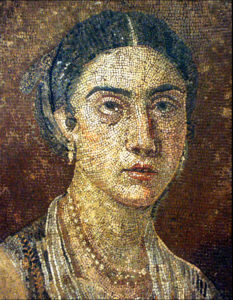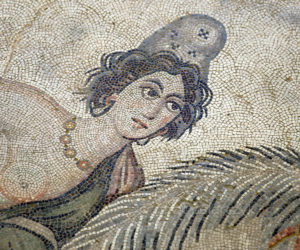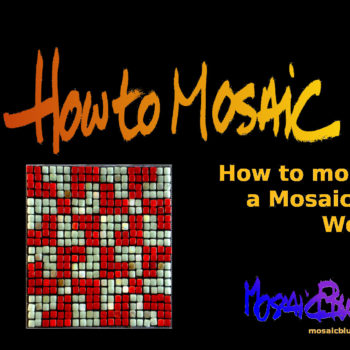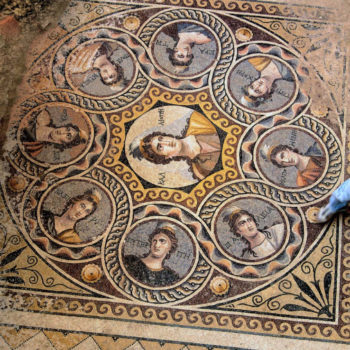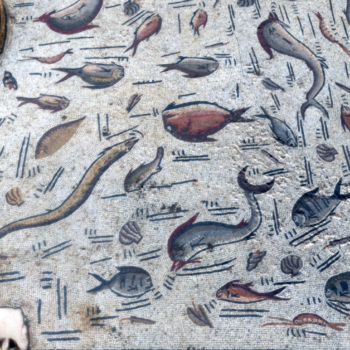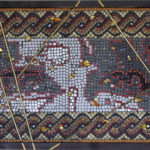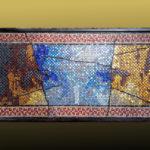JULIA
- Location : National Museum of Archaeology, Pompeii, Italy
- Date : 1st century AD
This incredibly detailed mosaic portrait of a young woman of a patrician family can be admired at the National Museum of Archeology in Naples, Italy. It comes from the cubiculum of a rich Villa in Pompeii and was displayed at the center of a bigger Opus Sectile mosaic.
We really have no idea what this lady’s name was, but in his 1834 immensely popular Novel «The Last Days of Pompeii» Edward Bulwer-Lytton immortalized her as the fair Julia, daughter of a rich Pompeii merchant.
“On the table before which she sat, was a small and circular mirror of the most polished steel: round which, in precise order, were ranged the cosmetics and the unguents – the perfumes and the paints – the jewels and the combs – the ribands and the gold pins, which were destined to add to the natural attractions of beauty the assistance of art and the capricious allurements of fashion.” …
Mona Lisa of Galilee
- Location : Zippori National Park, Israel
- Date : 4th century AD
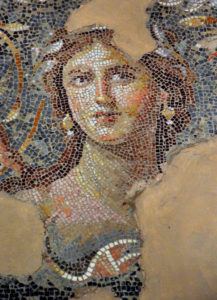
This exquisite and well-preserved mosaic was unearthed from the triclinium of a luxurious home referred to as the Roman Villa in the ancient city of Sephoris (nowadays Zippori in Israel). Its central part related to Dionysos is framed by medallions and two portraits. The Southern one, better preserved, depicts this captivating woman adorned with earrings and a laurel garland. This beauty was named “the Mona Lisa of the Galilee” for her timeless beauty and superb artistry and because she displays the faint hint of a smile similar to Leonardo da Vinci’s Chef d’oeuvre. Such smiling faces are absolutely unusual in antic mosaics or paintings.
One of my previous posts treated of a copy of this mosaic, probably also excavated from Israel territory.
The Gypsy Girl of Zeugma
- Location : Zeugma Mosaic Museum, in the town of Gaziantep, Turkey.
- Period : Late 2nd or early 3rd century AD.
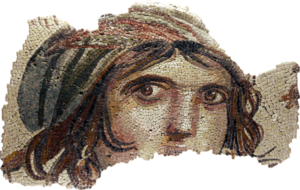
The Gipsy Girl is the most famous mosaic portrait on display at the 30,000 square meter Zeugma Mosaic Museum. Her phrygian cap, disheveled hair, prominent cheekbones and haunting eyes have made her become the face of the city of Gaziantep since 1998 when she was unearthed from the ancient city.
Many missing pieces of this mosaic pavement were looted and sold by smugglers in 1998. Some of them are currently on display in the USA and the municipality of Gaziantep is working to reclaim them to reunite them withing the museum. In 2016 I was offered from Turkey a mosaic which I was able to trace as having been stolen from a Syrian Museu. You can read this article here : ISIS tried to sell me a mosaic looted in Syria
4 – Queen Melanipe
- Location : Sanliurfa Archeology and Mosaic Museum, Camlik Caddesi, Sanliurfa, Turkey
- Period : 5th to 6th century AD
Queen Melanipe mosaic portrait
Melanipe was the queen of the mythical Amazon warriors. Here she is wearing a Phrygian cap very similar to the one worn by the Gipsy girl from Zeugma. She is thrusting her lance at a lion in a mosaic floor depicting a hunting scene.
The 5 to 6th century mosaic belonged in the luxurious “Villa of the Amazons”, which may have belonged to an important administrator of the Eastern Roman (Byzantine) Empire from Edessa (today’s Urfa).
5 – House of Amphitrite’s Venus
- Location : Bulla Regia, Jedouba, Tunisia.
- Period : 2nd to 3rd century AD
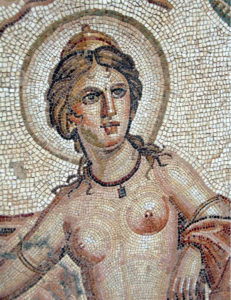
This mosaic can be seen in situ in the underground basement of the House of Amphitrite in Bulla Regia. Situated in north-western Tunisia and lying in an extremely fertile region this ancient Roman city is famed for its unique and distinctive underground villas built by the wealthy Romans in the second and third centuries AD to escape the baking Tunisian summer heat.
Five Portraits, Three Continents…
- Julia from Pompeii in Italy, Europe,
- Venus From Tunisia, North Africa,
- The Gypsy girl, Melanipe and Mona Lisa in Asia.
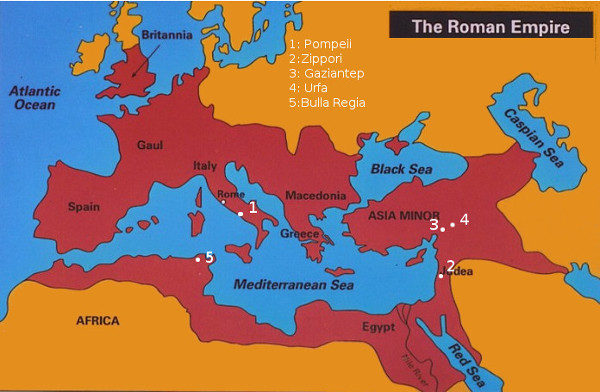
Which one is your favourite ?

